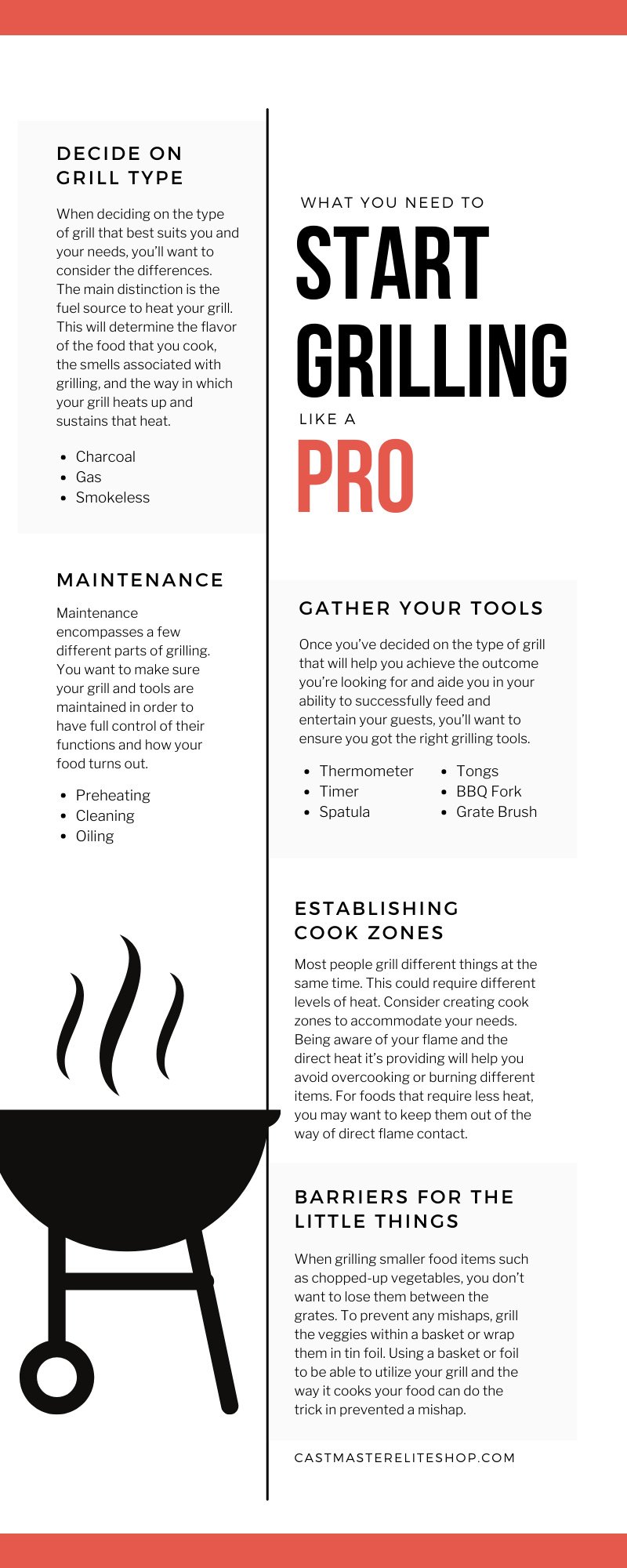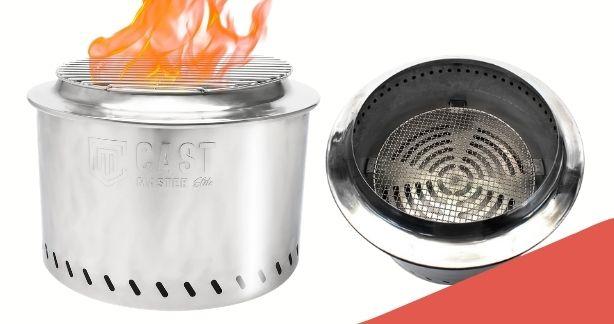With the ability to gather responsibly outdoors, backyard barbeques may be just the way to spend time together with a little freedom. Once the space is set, ambiance of lighting and sound is added, and comfortable areas to sit are arranged, all that’s left is the grilling of food. The smell of cooking food is a powerful enticer and great contributor to the overall feeling of a fun backyard barbeque get-together. Knowing what you need to start grilling like a pro will allow you to be the best host you can be.
DECIDE ON GRILL TYPE
When deciding on the type of grill that best suits you and your needs, you’ll want to consider the differences. The main distinction is the fuel source to heat your grill. This will determine the flavor of the food that you cook, the smells associated with grilling, and the way in which your grill heats up and sustains that heat.
CHARCOAL
Using charcoal in your grill will take a little extra effort. These types of grills require a bit of finesse to control so you can get the temperature and flame right. Food will have a distinct, smokier taste due to the actual smoke emitted from burning charcoal. Clean up can be a little messy due to residual ash.
GAS
With gas grills, you have more control over maintaining temperature and supplying heat. With the turn of a dial, the temperature can be lightened or intensified. A gas grill can burn woodchips—as long as they’re pre-soaked in water, drained, and put in heavy-duty foil.
SMOKELESS
A smoke-free grill is the best parts of the other two grill options combined. It’s portable, stainless steel, and you can build your fire using kindling. It doesn’t require the use of gas—as long as you’ve got wood to burn, you’re set. Cast Master Elite’s smokeless grill allows you to grill with consistent heat due to the placement of the ventilation holes. Because it’s smokeless, your food won’t taste smokey when done. Because of the oxygen holes the wood burns hotter, and more thoroughly, requiring very little clean-up of ash afterwards. Additionally, this product can be dual-purposed. Once you’re done cooking on it, it can be used as a bonfire as the sun sets, keeping the party going longer after everyone is fed.
GATHER YOUR TOOLS
Once you’ve decided on the type of grill that will help you achieve the outcome you’re looking for and aide you in your ability to successfully feed and entertain your guests, you’ll want to ensure you got the right grilling tools.
THERMOMETER
Meat thermometers are a necessary addition to your grilling kit. It’s key to understand the temperature at which different meats are thoroughly cooked. Weather conditions, outdoor temperatures, and more can affect the way the grill heats up and maintains its heat. You can’t “un-cook” food, but you can always throw it back on the grill. Be sure that if the thermometer says it’s done, it’s done. Keep in mind that meat needs to rest and some of it continues to cook even after being removed from the grill.
TIMER
Timing is just as important as tracking the temperature of what you’re grilling. Keeping track of how long food has been cooking for help you not undercook anything. The thermometer is for double checking, but all cook times should be kept track of to maintain food quality as well as safety.
SPATULA
A spatula is very helpful tool. The ones made for grills are not only sturdier—and typically metal with perhaps a wooden handle—but they’re also longer. When grills get hot, the spatula’s lengthened handle helps keep you at a safe distance from the grill’s extreme temperatures.
TONGS
Similar to a grill spatula, the grill tongs are longer, metallic, and sturdy enough to turn and lift large pieces of meat or other food. They tend to be a little sharper than other types of tongs and have teeth for gripping purposes. Old school tongs required your fingers to be intertwined with them, whereas newer grill-specific tongs allow the tongs to be easily let go of if necessary.
BBQ FORK
A grill fork can aide in not only rotating or turning food over, but it can puncture items that need a little relief. Sometimes the casing on meat, or a foil bag, starts to build up pressure. A grill fork can lend a quick poke to relieve some of that pressure.
GRATE BRUSH
Necessary for cleaning your grates, a grate brush is a useful tool to have. Beware of wired bristles, however, as they may fall out of brush and make their way onto your cooking food. They can be difficult to see, so be sure to watch for them if you choose this type of brush. Those wire bristles are not something you want your guests ingesting. Consider a non-bristle cleaning tool to maintain your grill.
MAINTENANCE
Maintenance encompasses a few different parts of grilling. You want to make sure your grill and tools are maintained in order to have full control of their functions and how your food turns out.
PREHEATING
It’s essential you give your grill time to reach an appropriate temperature before you being to cook. As with most cooking, preheating is essential.
CLEANING
Cleaning is best done when the grill is hot. Kill two birds with one stone by cleaning your grill while it’s preheating. Scrubbing the grates before cooking will allow for an up-to-date cleaning while allowing food to cook more evenly, avoid sticking, as well as give the food a good sear.
OILING
For an extra step in preventing food from sticking, apply your favorite cooking oil to the grates. This will aid with flavor, heat transfer, and prevent food from sticking while you cook.
ESTABLISHING COOK ZONES
Most people grill different things at the same time. This could require different levels of heat. Consider creating cook zones to accommodate your needs. Being aware of your flame and the direct heat it’s providing will help you avoid overcooking or burning different items. For foods that require less heat, you may want to keep them out of the way of direct flame contact.
BARRIERS FOR THE LITTLE THINGS
When grilling smaller food items such as chopped-up vegetables, you don’t want to lose them between the grates. To prevent any mishaps, grill the veggies within a basket or wrap them in tin foil. Using a basket or foil to be able to utilize your grill and the way it cooks your food can do the trick in prevented a mishap.
When it comes to what you need to start grilling like a pro, there are many things to consider. The main thing is to decide on the type of grill you want and ensure you fully understand how it works. From there, maintaining it and cooking food properly should come easily. Remember the most basic rule: fire makes things hot, so implement proper tool use and safety practices to avoid problems or injuries.







